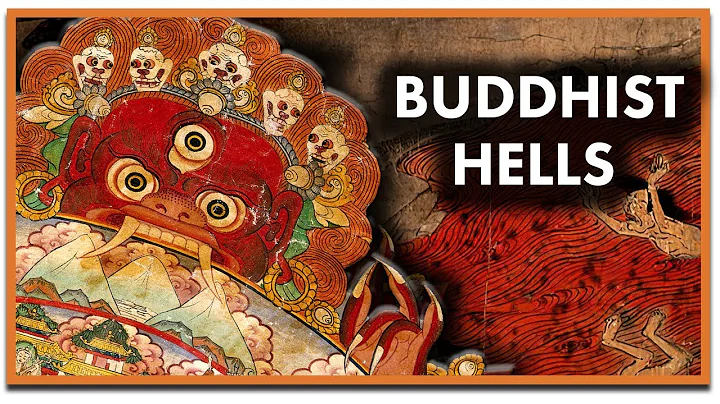
Big Buddha Cave
Gao Yang (526-559), the founding emperor of the Northern Qi Dynasty, was the second son of Gao Huan and the younger brother of Gao Cheng. The Gao family believed in Buddhism and strongly promoted Buddhism when they were in charge of the Eastern Wei Dynasty and Northern Qi Dynasty. Shi Daoxuan recorded in "Continued Biography of Eminent Monks": "In the second year of Tianbao, another edict was issued... All kinds of birds of prey should be released in the mountains and forests because they hurt lives...", "He can also lead the people to ban wine and meat, It is not possible to let go of hawks and dogs, and to massacre all kinds of fish. In March of that year, the people were advised to fast, and all meat and vegetables, both public and private, were eliminated." This reflects his benevolent governance strategy.
The Big Buddha Cave is the largest grotto excavated during the Eastern Wei Northern Qi period. Although the appearance is simple, when you step into the cave, you will feel the depth and hugeness. Standing in the corridor less than two meters wide and looking up at the nearly four-story-high cave roof, coupled with the huge statues of Buddha and Bodhisattvas on both sides, it is quite awe-inspiring.

right corridor. Standing in a corner of the cave, you still can't fully capture the entire landscape.
Inside the Big Buddha Cave, in addition to the statues of the Third Buddha in three niches on three sides of the Pagoda Pillar Cave, there are also several stunning works.
The first one is the statue of the Ten God Kings on the base of Pagoda Cave. Although the shadows of the statues of God Kings in Gongxian Grottoes are vaguely visible, they are completely different masterpieces. The Ten God Kings refer to the Lion God King, Bird God King, Elephant God King, Pearl God King, Wind God King, Dragon God King, River God King, Mountain God King, Tree God King, Fire God King and other gods. In ancient times, they were usually regarded as For the purpose of guarding and guiding rituals.

River God King

Bird God King

Elephant God King

Wind God King

Tree God King

Fire God King
The second one is the Baoxianghua unique to Xiangtang Mountain. The archaeological community defines this as "Baoxianghua", which is composed of a phase wheel base, banana leaves, lotus flowers, orbs, flame patterns, etc. The appearance frequency of Baoxianghua in Xiangtang Mountain is relatively rare in the cave temples, and it is also different from the form of Baoxianghua in later dynasties. Although it is short-lived, it is extremely beautiful.

宝香花

The treasure xianghua standing on the forehead of each niche
The third one is the fear of beasts. The fearful beasts in the Big Buddha Cave are different from the flat carvings of the Gongxian Grottoes. They are round carvings on pillars distributed at the base of the tower and the four walls of the cave. Most of them are made of animal-like human bodies, with wings on the shoulders, three claws and two toes, the upper body is exposed, and the facial expressions are weird and exaggerated. The feared beasts in the legend are ferocious beasts that can ward off evil spirits. "The Continuing Biography of the Eminent Monk" also has "the carvings are frightening to people and ghosts", and performs the sacred duty of guarding and guarding the Buddhas in the cave.

The relatively complete statues of the feared beasts are preserved.


None of the dozens of existing figures of the feared beasts in the Big Buddha Cave are complete, and they have all been damaged. As early as the early years of the Republic of China, those complete majestic beasts were systematically stolen and sold abroad by cultural relic thieves Lu Qinzhai and others. Those exquisite monsters are now in various public or private museums in the United States, Japan, France, and the United Kingdom. The beast is the evidence.




(The above four pictures are excerpted from the University of Chicago Museum website)
The three-dong statues of Gaoyang in the early Eastern Wei and Northern Qi Dynasties still inherited the bold spirit of the Northern Wei , and thus opened up the elegant and romantic style of Sui and Tang carving techniques. . The shapes and carvings of Buddha and Bodhisattva statues, god-king statues, fearsome beasts and various flowers in the Big Buddha Cave are enough to appreciate the bravery and heroism of the Northern Qi Xianbei people when they went south to the Central Plains. They collided with the Central Plains culture and were influenced by the sculpture style. The knife skills and techniques tend to be more delicate, soft, dynamic and realistic, expressing the eclectic and broad-mindedness of believers and craftsmen in the spread of Buddhism.







![[English] Who Am I - Lecture 1 - Ven. Guan Cheng - DayDayNews](https://i.ytimg.com/vi/KU0fUs2It5o/hq720.jpg?sqp=-oaymwEcCNAFEJQDSFXyq4qpAw4IARUAAIhCGAFwAcABBg==&rs=AOn4CLDFpQUN_QwRfC7bmP4sUadq-RcYdg)
![A Moving Masterpiece 清明上河图 [English narration] - DayDayNews](https://i.ytimg.com/vi/kxff-4GktOI/hqdefault.jpg?sqp=-oaymwEcCOADEI4CSFXyq4qpAw4IARUAAIhCGAFwAcABBg==&rs=AOn4CLBtHGLeUpJNCYDJYnZTuISQ1N5Vag)


